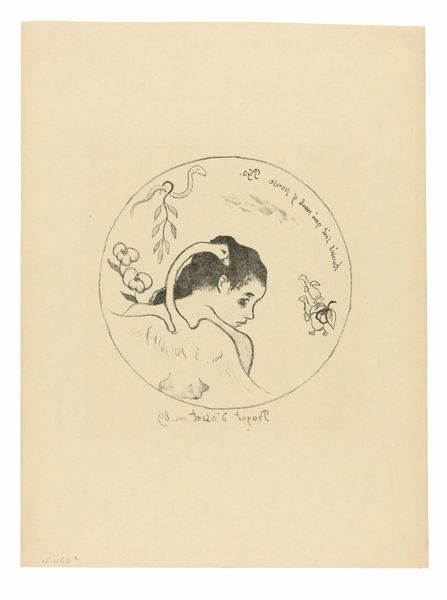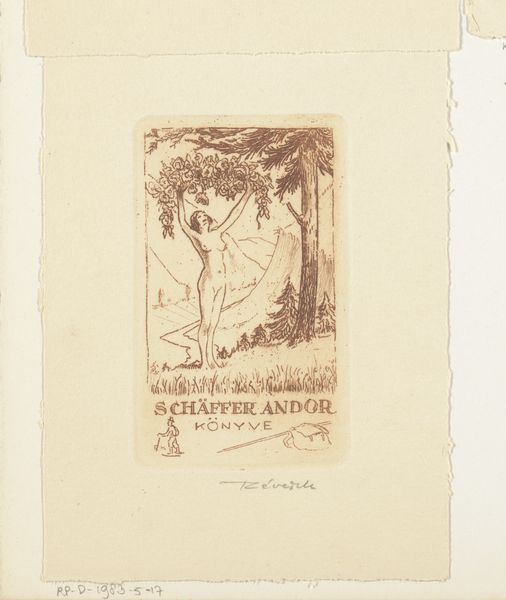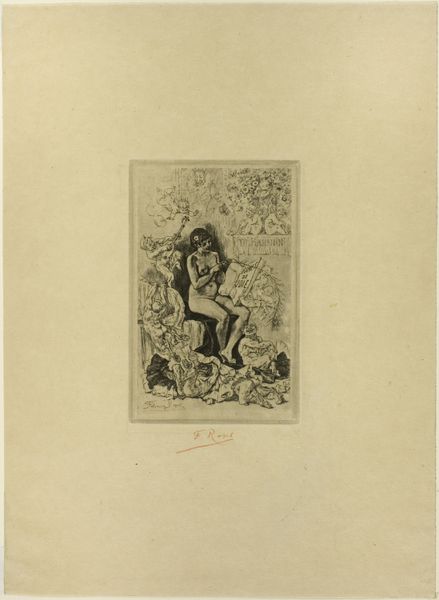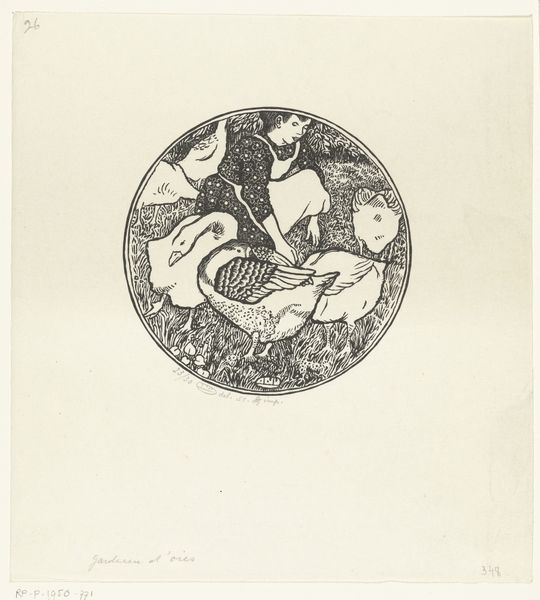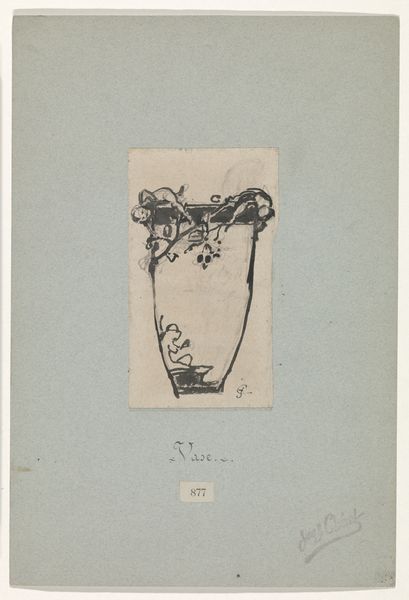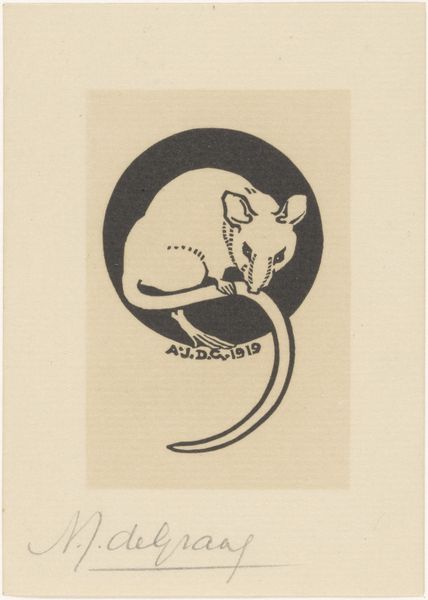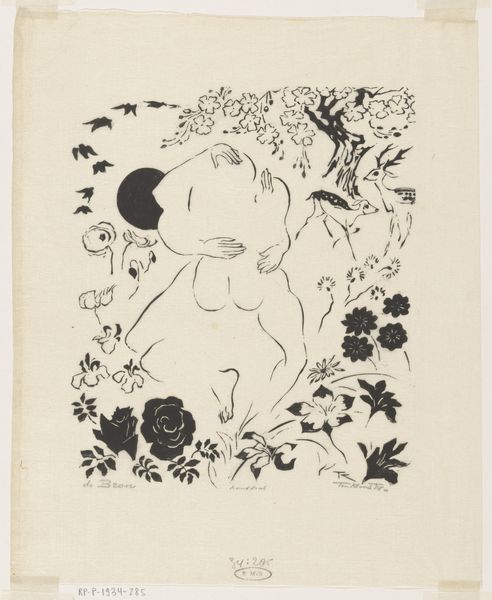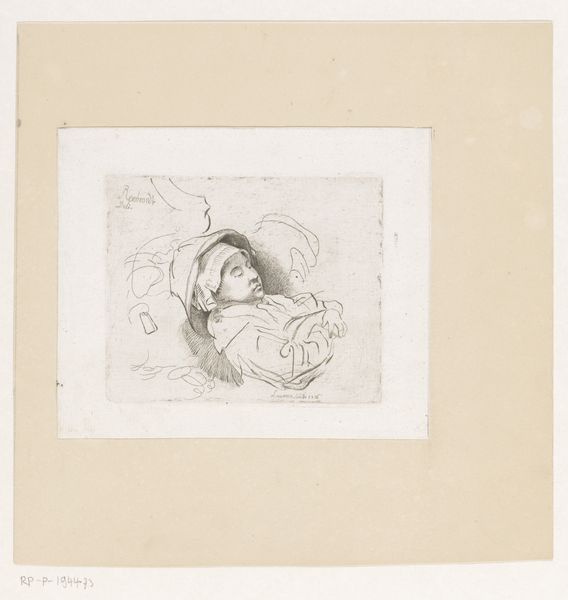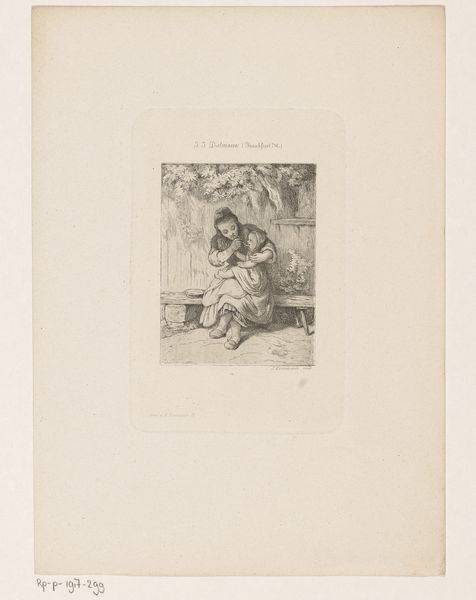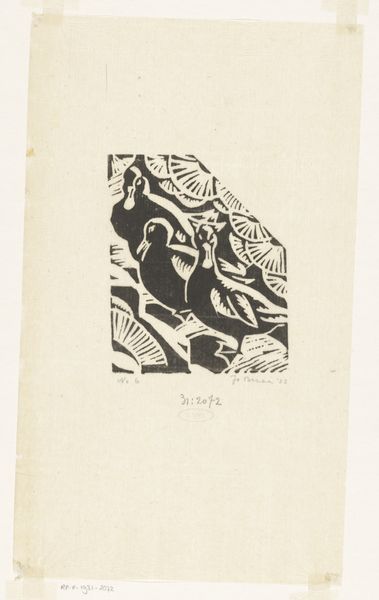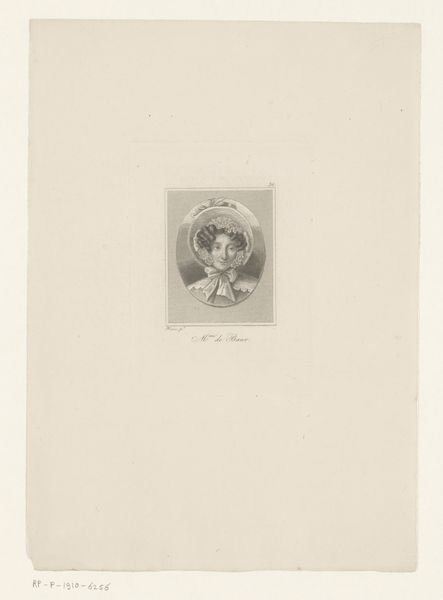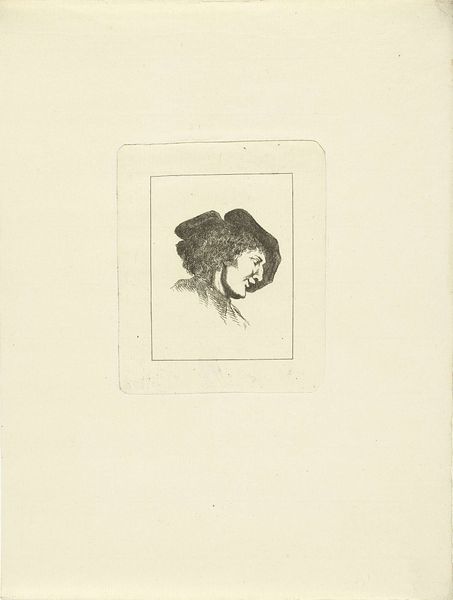
drawing, print, ink, pen
#
portrait
#
drawing
# print
#
figuration
#
ink
#
ink drawing experimentation
#
pen-ink sketch
#
line
#
symbolism
#
sketchbook drawing
#
pen
#
post-impressionism
Dimensions: 220 mm (height) x 205 mm (width) (billedmaal)
Curator: We’re looking at Paul Gauguin's "Projet d'assiette" from 1889, currently held at the SMK - Statens Museum for Kunst. It’s an ink drawing, seemingly intended as a design for a plate. Editor: Immediately, I’m struck by the sense of melancholy. The lone figure, that sinuous snake... it’s almost dreamlike in its stark simplicity. What narratives do you see unfolding? Curator: For me, it's intriguing how Gauguin approaches the technical aspect here. Notice the stark contrast achieved purely through ink and line work, essentially transforming the ceramic form into a printing plate. The method is almost industrial in its efficiency. Editor: But the symbolic weight is hard to ignore. This solitary figure, the subtle rebellion in her averted gaze, framed by that suggestive serpent… given Gauguin's later explorations of Tahitian women, this evokes complex themes of colonialism, objectification, and female agency, or lack thereof. Curator: Certainly, we can’t ignore the implications of cultural appropriation in Gauguin's wider body of work, a discourse intensified when viewing preparatory works like this. But from a production standpoint, consider the accessibility—prints allowed wider dissemination, potentially reshaping art consumption at the time. Editor: True, printmaking democratizes art to some degree, yet here that dissemination also carries Gauguin's loaded perspective. This project also invites scrutiny of art’s function: is it merely decorative, as its plate form suggests, or can it subvert expectations to communicate powerful messages about identity and power? The use of a humble domestic item throws these social issues into sharper focus, right? Curator: I think you're correct in seeing both facets present. Its dual potential speaks to art's ambiguous social role—simultaneously functional object and symbolic battleground. Editor: Indeed. And as we continue unraveling such intricacies, it becomes ever more vital to keep re-contextualizing historical works like this with our contemporary awareness. Curator: Absolutely. Engaging with pieces such as this one reminds us that artistic ingenuity and critical self-reflection are necessary components of any genuine artistic interpretation.
Comments
No comments
Be the first to comment and join the conversation on the ultimate creative platform.
